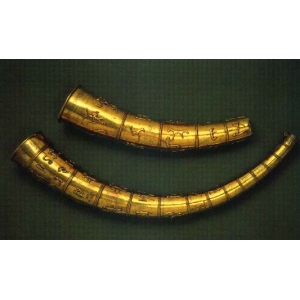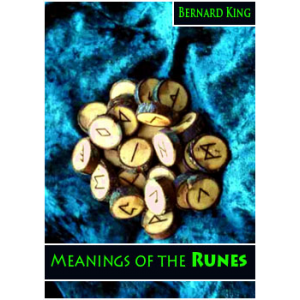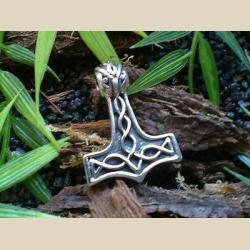
Although the Eddas and Sagas are by far the most respected and influential texts consulted by modern Nordic Pagans, other texts and sources of
Information are widely shared and discussed. The Heimskringla, also written by Snorri Sturluson, is a semihistorical, semimythological account of ancient Norwegian kings that provides information about gods, ritual practices, and life and society on the Scandinavian mainland (as opposed to the Icelandic focus of the Sagas). Skaldic poems, an archaic Icelandic genre from Viking times, provide vivid accounts of warrior heroes and gods.
There are also non-Norse, non-Icelandic texts. The medieval Anglo-Saxon poem Beowulf, which tells of Scandinavian warrior life, is a valued literary treasure from England. More fragmentary Anglo-Saxon texts, such as the Nine Spells Charm (Rodrigues 1993), provide insight into the Anglo-Saxon variants of Norse Paganism—for example, the Norse Odin worshipped as the Anglo-Saxon Woden in England and the poem The Dream of the Rood, which blends Christian and Norse Pagan motifs in strange and startling ways. A fragmentary German text, the Merseburg Charm, tells of
spells and incantations containing mythological information. The German epic Nibelungenlied is popular as an illustration of warrior ethics. German and Scandinavian folk and fairy tales are also valued as expressions of Nordic sensibility toward life and nature. The Gesta Danorum, a history of the Danes written in Latin by an antiquarian monk, Saxo Grammaticus, provides alternate and sometimes strikingly different accounts of Eddic myths and gods. The Roman historian Tacitus’s Germania, an account of German tribes on the fringes of the Roman Empire, is also studied with interest as the earliest documentary text related to Germanic-Scandinavian peoples. Most Nordic Pagans read these texts in English translation, but scholarly Pagans study these documents in their original languages.
Various nontextual sources of information about past Nordic life and culture are highly valued. Archaeological remains in the Scandinavian nations—from the ancient kings’ tombs in Denmark and Sweden to Viking tombstones and runic inscriptions on the Baltic island of Gotland to the site of the original Icelandic Thing parliament at Thingvellir—are sites of Nordic Pagan pilgrimage. Discussions of the history and significance of such sites are followed with intense interest in both popular and scholarly media, from documentary programs on the Discovery Channel television network to archaeological journals. Runes, the ancient Scandinavian writing and symbol system, receives intensive interest because of the widespread belief among modern Nordic Pagans that the runes possess esoteric, ritual significance.
Although it is doubtless true that modern Nordic Pagans take an extremely positive, even romanticized view of past Nordic history and culture, theirs is not an entirely uncritical view. They seek to reconstruct only select aspects of the worldview and lifestyle of the Vikings and other past Nordic peoples, and they acknowledge that there are other aspects, such as slavery and wanton violence, that they are all too happy to leave in the past. A good many Nordic Pagans follow scholarly debates about Nordic history and are conscious that the contemporary
Understanding of the Nordic past is continuously evolving through the clash of multiple perspectives and interpretations, like modern Nordic Paganism itself.
Free eBooks (Can Be Downloaded):
Richard Roy - 13 Questions On Paganism And WiccaJean Seznec - Survival Of The Pagan GodsWilliam Phelon - Our Story Of AtlantisShri Gurudev Mahendranath - Notes On Pagan IndiaYves Kodratoff - Seidr Seid Sol Iss Burs And Nordic Shamanism




